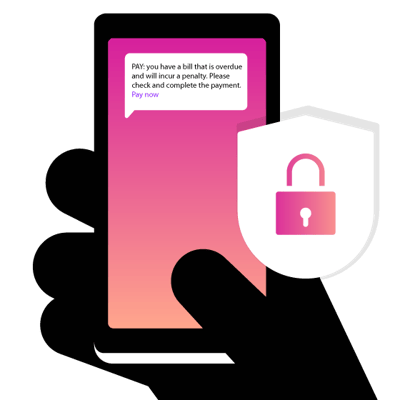5 Key Technology Challenges for the Healthcare Industry
Here's a quick one: Think about the job of today’s healthcare technology. No, not stethoscopes. Not fluorescent X-ray viewers. Not defibrillator paddles. I’m not talking about that beeping cardiac-event monitor. I’m talking about health INFORMATION technology.

The Role of Technology in the Healthcare Industry
Technology can deliver a wide range of communications tools that:
minimize errors by avoiding mistakes in prescribing due to illegible or incomplete forms for dosages, routes, allergies, and interactions
boost outcomes by facilitating post-op engagement efforts to educate patients about their procedures, give them confidence in their providers, and reduce their lengths of stay
facilitate care by reaching out to patients in the channels they prefer (e.g., SMS, email, telephone, etc.) to prompt them to take action
slash inefficiencies by giving providers a full view of a patient’s medical history
track data to measure the performance of treatments among cohorts of specific populations
How Does Technology Affect Healthcare?
Better, more open lines of communication between caregivers and patients, so patients can easily cancel appointments and free caregivers to see more patients each day?
Clinical services using video technology, so patients with limited transportation options don’t have to visit the doctor’s office in person?
Health apps that let patients monitor their medical information, test results, and more, so they can be more proactive and reduce healthcare costs, readmission rates, and unnecessary risks?
It doesn't take a lot of imagination to picture the impact all of this might have on modern medicine.
But the truth is — despite all the miraculous advantages healthcare’s enjoying today — technology challenges persist.
What Are the Challenges Facing Technology in the Healthcare System?
1. Security
Security is a primary concern in healthcare applications, as they often deal with confidential and sensitive patient health data. The healthcare industry has very stringent requirements around cryptographic security that dictates how and when to encrypt, transmit, and decrypt data.
Compliant telehealth applications must follow specific encryption algorithms and data security standards. Additionally, any underlying third-party platform used to help power a telehealth service must embrace security by having comprehensive data protection, access control, and business continuity rules and procedures in place.
2. Integration and Cost Effectiveness
Today’s video conferences rely on WebRTC (Web Real-Time Communication), but as it’s a browser-based technology, enterprise organizations with restricted environments looking to adopt it will inevitably encounter browser/plugin/network issues. In addition, the legacy devices and systems that have historically been used to store content (e.g., patient health records and images) aren’t normally compatible with new technologies like WebRTC.
It’s not just legacy storage systems that impede adoption. To make WebRTC compatible with traditional video-conferencing solutions, a healthcare organization would need to use proprietary protocols, software, and hardware, all of which increase infrastructure costs tremendously. Furthermore, these legacy solutions require maintenance and costly upgrades, increasing the total cost of ownership.
 Fight messaging fraud with Vonage Fraud Defender
Fight messaging fraud with Vonage Fraud Defender
3. Data Privacy and Regulations
A number of privacy laws and regulations surround patient-document rights, including how providers share information. Inevitably, such regulatory measures put a burden on data fluidity and make it more difficult to adopt new technologies that involve data.
Understandably, HIPAA compliance is often raised as a key concern for any healthcare technology. For the communication of patient information through technologies like WebRTC, HIPAA requires that technology protects patient confidentiality by properly securing the channel.
To add to the complexity, the regulations aren’t just one size fits all. Data protection and legislation differs greatly between countries. For example, there are specific laws and directives in the European Union on cross-border healthcare, and the “safe harbor” framework has prescribed specific standards to ensure the safe passage of patient/private data between the U.S. and E.U.
4. Simple User Experiences
Undeniably, user experience is of utmost importance when organizations are considering changing or adding new technology or working methods. According to a May 2022 Beckers Hospital Review article on the most recent results of the National Electronic Health Records Survey, just “68.1 percent of respondents in physician-owned practices reported satisfaction with their EHRs, compared to 58.5 percent at nonphysician-owned offices.” This suggests that many healthcare professionals are reluctant to change their existing methods and systems that they’re accustomed to. New technologies must quickly justify their value by increasing efficiency and customer satisfaction.
Much like clinicians, doctors, and nurses, patients tend to adopt new healthcare services slowly. And while that may finally be changing, the technology — to be truly successful — must be user friendly and fit seamlessly into familiar workflows.
5. High-Performing, High-Quality Solutions
Real-time communications requires robust application performance and quality of service. Consider a virtual home-care service for chronically ill patients who need 24/7 monitoring. The service’s caregivers need access — on devices and endpoints — to reliable, high-quality video, audio, imagery, and patient-monitoring data.
Can off-the-shelf WebRTC deliver that content without significant investment? No! But third-party services are already simplifying the telehealth process by abstracting away WebRTC's complexity and delivering a highly reliable and secure telehealth application.
What Technological Challenges Can We Expect in the Future?
According to Forbes, many — including difficulties with data sharing, transparency, and preventative care.
But WebRTC can help here, too. It can support data sharing by establishing network channels between peers — channels that can convey data in any format — which could then support transparency and ensure patients know how much a medical service costs, why it was done, and more. Even better, WebRTC could deliver AI-predicted patient outcomes in a timely manner, keeping some people from becoming patients at all.
What Can Companies Do to Keep Up With These Challenges?
Maintaining a competitive edge requires companies to optimize their health information technology strategies and address the aforementioned trends head on. This includes analyzing the level of security, data privacy, integration, user experience, performance, and quality of service their current technology stack delivers today, as well as how improving that level may better position the organization for the future.
Conclusion
If you haven’t yet factored in the role of health information technology in your health technology portfolio, you can now see why no healthcare provider of any size can avoid the challenges — and opportunities! — that this advancing technology creates.
Ready to discover how your organization can take advantage of the rise of WebRTC and address all the critical technology issues above?
Visit the Vonage healthcare APIs webpage to learn more.